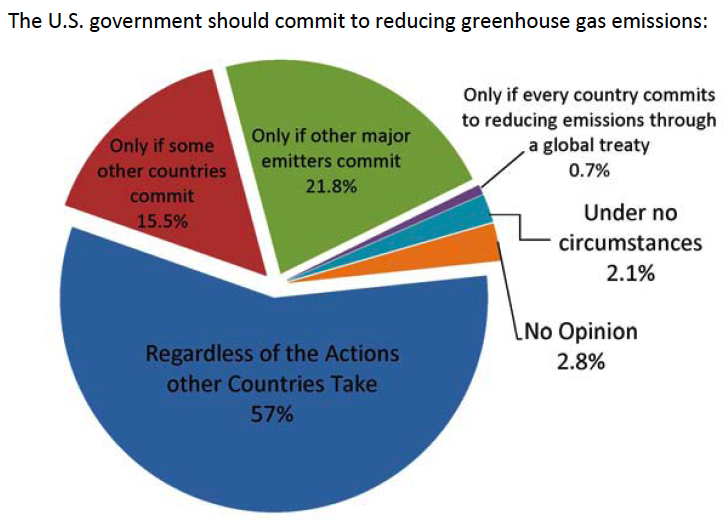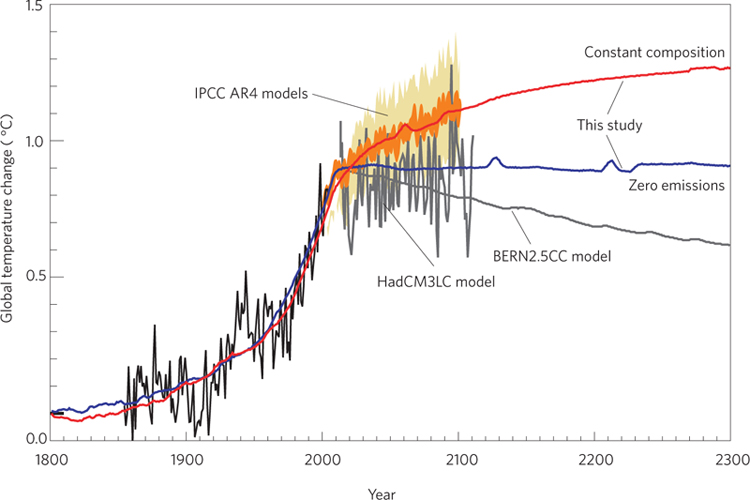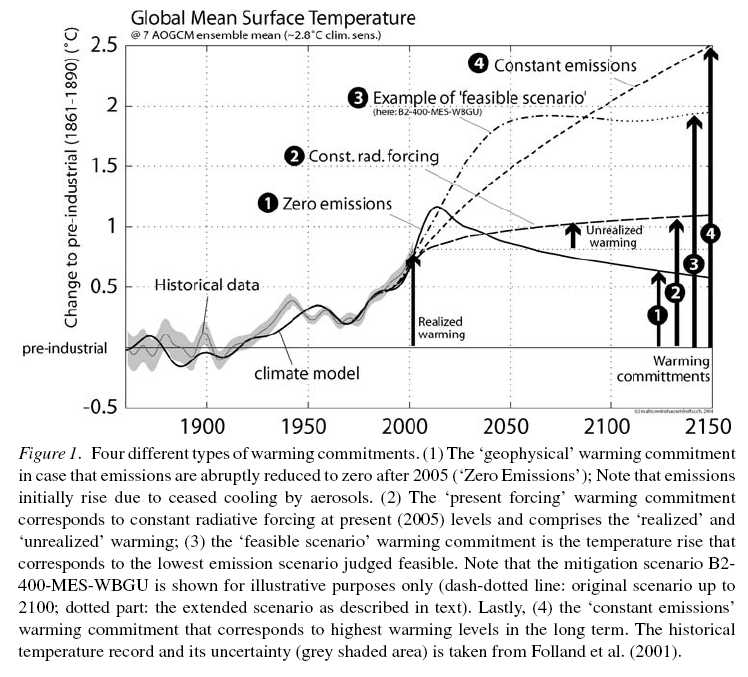Lindzen Illusion #3 and Christy Crock #5: Opposing Climate Solutions
Posted on 3 May 2011 by dana1981
 Recently, "skeptic" climate scientist John Christy testified before U.S. Congress, and both Christy and fellow "skeptic" Richard Lindzen have been interviewed on an Australian radio talk show regarding the country's proposed carbon tax.
Recently, "skeptic" climate scientist John Christy testified before U.S. Congress, and both Christy and fellow "skeptic" Richard Lindzen have been interviewed on an Australian radio talk show regarding the country's proposed carbon tax.
 In each situation, these two scientists spoke out against efforts to address climate change by reducing carbon dioxide (CO2) and other greenhouse gas (GHG) emissions.
In each situation, these two scientists spoke out against efforts to address climate change by reducing carbon dioxide (CO2) and other greenhouse gas (GHG) emissions.
Tragedy of the Commons Once Again
Their main argument seems to be becoming a favorite amongst "skeptics": "CO2 limits will make little difference." In his radio interview, Christy applied the argument to California (which is attempting to implement a carbon cap and trade system), Australia (with the aforementioned proposed carbon tax), and in his congressional testimony, to the USA:
"We’re talking about less than a hundredth of a degree [if California cuts emissions by 26% by 2016]. It’s just so miniscule; I mean the global temperature changes by more than that from day to day. So this is what we call in Alabama “spitting in the ocean”."
"On the climate front, [Australia cutting its emissions by 5% by 2020] will be imperceptible or minuscule compared to what the rest of the world is doing."
"you're looking at most at a tenth of a degree [reduction in global temperature] after 100 years [if USA imposes CO2 limits]"
Lindzen attempted to apply the argument globally:
"The evidence is pretty good that even if everyone [cut emissions] in the whole world it wouldn't make a lot of difference."
We have previously addressed this argument as applied to Australia by Chris Monckton and David Evans, and applied to the USA by David Montgomery. However, given that the USA is the largest historical CO2 emitter, the second-largest current emitter, and high on the list in terms of per capita emissions, it may be worthwhile to evaluate these claims. Let's run the numbers using CO2 emissions data from the U.S. Energy Information Administration.
Current global CO2 emissions total approximately 30 billion tons (Gt) per year, with the USA contributing approximately 20% (5.8 Gt per year). US emissions have risen approximately 15% since 1990, so let's assume in a business as usual scenario, they will continue to rise at that rate. In this case, total US CO2 emissions between now and 2050 will total approximately 275 Gt. The IPCC projects that in business as usual, global CO2 emissions will total approximately 2,200 Gt over that period.
If the USA were to follow through with proposals to reduce CO2 emissions 83% below 2005 levels by 2050, the result would roughly cut the country's emissions over that period in half, to 140 Gt, reducing global emissions to approximately 2,060 Gt.
Approximately 55% of human CO2 emissions currently remain airborne (the remainder is absorbed by carbon sinks), and each 7.8 Gt CO2 emitted corresponds to roughly 1 part per million by volume (ppmv) increase in atmospheric CO2 concentration. Thus the US cuts would reduce the atmospheric CO2 concentration to approximately 540 ppmv compared to 550 ppmv in business as usual in 2050.
Assuming the IPCC most likely climate sensitivity value of 3°C for doubled CO2 (incorporating only fast feedbacks - remember, long-term sensitivity is even higher) is correct, these US emissions cuts by themselves would reduce the amount of equilibrium warming by 0.08°C, from roughly 2.9 to 2.8°C surface warming above pre-industrial levels. And of course Australia and California's cuts would have even less effect on global temperatures, as they have smaller populations and thus lower total emissions. So Lindzen and Christy have a point here, right?
Well, no. In particular, Lindzen claims that global emissions cuts "wouldn't make a lot of difference." But let's say international negotiations succeeded in convincing countries all around the world to reduce global CO2 emissions by 50% below 1990 levels by 2050. Now suddenly instead of 2,200 Gt CO2 emitted in the next four decades, it's only about 820 Gt. Now instead of 550 ppmv in 2050, we're looking at about 450 ppmv.
Instead of committing ourselves to 2.9°C warming above pre-industrial levels as in business as usual, we're only committed to 2°C, which keeps us right at the cusp of the global warming "danger limit." Plus rather than blowing past the danger limit with CO2 levels continuing to rise rapidly, we'll have set up the technologies and infrastructure necessary to continue reducing emissions to safe levels. Remember, the last time atmospheric CO2 was at current levels, global temperatures were 3 to 4°C warmer than pre-industrial, and sea levels were around 25 meters higher than current sea level. So we really should aim to eventually stabilize atmospheric CO2 at no higher than 350 ppmv, and the more CO2 we emit now, the more difficult that will be. We're currently adding another 2 ppmv CO2 to the atmoosphere per year, continually moving further away from that 350 ppmv target.
So clearly Lindzen is wrong that global emissions cuts won't make a difference. And the only way we're going to achieve large global emissions cuts is if major emitters like the USA and Australia lead the way in reducing their emissions. And the USA is more likely to proceed if states like California demonstrate that CO2 limits can be implemented successfully. Thus although these individual cuts won't have a significant direct impact on global temperatures, they can have a major indirect effect by triggering more widespread emissions cuts.
Costs vs. Benefits
In his Australian radio interview, Lindzen also claimed that the costs of CO2 limits would outweigh the benefits.
"[CO2 limits are] a heavy cost for no benefit, and it's no benefit for you, no benefit for your children, no benefit for your grandchildren, no benefit for your great-great-great-great-grandchildren. I mean, what's the point of that?"
Christy made a similar argument both in his US Congressional testimony and his Australian radio interview.
"this issue has policy implications that may potentially raise the price of energy a lot, and thus essentially the price of everything else."
"I would think a couple of things will happen [if Australia cuts its emissions by 5% by 2020]. One is that your energy prices will rise and your economy then will begin to turn downward. And you will provide opportunities for other nations to take up the slack that Australia used to provide the world."
It's true that carbon limits would likely cause a modest rise in the market price of energy. However, the funds from selling carbon emissions permits could be used to offset this price increase through improved energy efficiency and other measures. Economic studies showed that the proposed CO2 limits in the USA would have virtually no impact on average electricity bills, for example. It's important to distinguish between prices and bills – an increase in the former doesn't necessarily cause an increase in the latter, if other measures are taken to prevent bills from rising.
Moreover, the true cost of coal energy, on which Australia and the USA rely heavily, is approximately triple the market price, which does not account for factors like impacts on public or environmental health. Thus a carbon price more accurately reflects this true cost in the market price, and also aids in the transition to other energy sources whose true cost is actually lower than fossil fuels. So although market prices may rise, the total cost paid by Australians, Americans, etc. will actually fall.
This is one of the reasons that contrary to Lindzen's claims, the benefits of carbon limits outweigh the costs several times over. This is something that economic studies and economic experts consistently agree about. You could even call it an economic climate consensus. A recent survey of 144 of the world's top economists with expertise on climate change found that 88% agreed that the benefits of carbon pricing outweigh the costs, and over 94% agreed the US should reduce its GHG emissions if other major emitters also commit to reductions (which many already have, particularly in Europe):

NYU IPI survey results when asked under what circumstances the USA should reduce its emissions
Stick to What You Know
In their comments dissuading Australian and American efforts to address the threats posed by global warming and climate change, Lindzen and Christy made a number of erroneous and false statements. Perhaps these climate scientists should leave the economic arguments to, you know, economists. And they should certainly stop promoting the Tragedy of the Commons. If the USA can argue that its emissions cuts won't make a difference, then every country can make the argument. And if everyone makes it, we'll fail to achieve even modest emissions cuts, and as a result we will all doom ourselves to increasingly dangerous global warming and climate change.
A good scientist should not encourage us to play Russian Roulette with the climate, all the while adding more and more bullets to the chamber.































 Arguments
Arguments























 0
0  0
0 .
Holding emissions at current level doesnt look too dangerous from this diagram. Of course, this doesnt address the equity issue which would propose that west reduced emissions heavily so developing countries can increase their's but that is a different issue.
.
Holding emissions at current level doesnt look too dangerous from this diagram. Of course, this doesnt address the equity issue which would propose that west reduced emissions heavily so developing countries can increase their's but that is a different issue.
 However, given the example of the Eemian, it is plausible that both of these constant forcing scenario's are wildly optimistic and that constant forcing would result in a two plus degrees C increase.
However, given the example of the Eemian, it is plausible that both of these constant forcing scenario's are wildly optimistic and that constant forcing would result in a two plus degrees C increase.







Comments